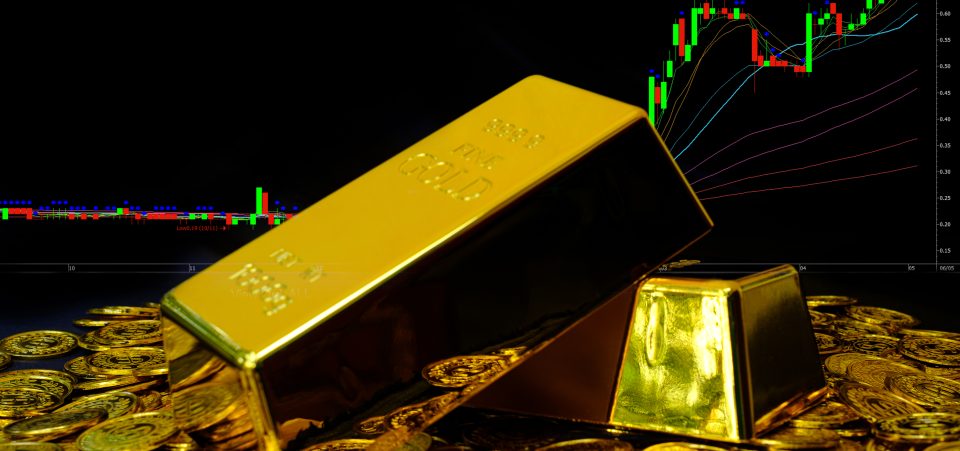Gold Prices Could Rise to $3,000/Ounce as Central Banks Buy More
Something amazing is happening in the gold market, but it’s largely going unnoticed: central banks are buying gold at a record pace. This could be a big catalyst that sends gold prices toward $3,000 per ounce much sooner than previously expected.
It’s unlikely you’ll hear about central banks buying gold in your evening news or throughout the day in the mainstream financial press. It’s not the hot thing to talk about. Here’s the reality, though: central banks have been net buyers of the yellow precious metal since 2010. They don’t care about where gold prices stand; they buy the metal regardless.
Why have central banks been buying gold? It’s very simple: the yellow metal is one of the best hedges against volatility in their foreign reserves, which are filled with fiat currencies. Gold acts as an anchor against any wild movements in their reserves.
Why haven’t central banks been announcing their gold purchases, though? Many central banks around the world could be in dire need of gold, given how volatile currency markets have been lately. If they announce that they want gold, speculators will try to front-run them, which would increase gold prices much higher than the banks would want.
Which central banks have been buying gold? It has mainly been central banks in emerging or developing economies. The big central banks like the U.S. Federal Reserve and the European Central Bank (ECB) already own a lot of gold.
Central Banks Bought Record Amounts of Gold in Q3
In the third quarter of 2022, central banks purchased 400 tonnes of gold. This was their largest quarterly purchase of gold since at least 2000 and almost double their previous quarterly record—241 tonnes—which was set in the third quarter of 2018. Furthermore, year-to-date (up to September 30), central banks purchased 673 tonnes of gold; this was higher than any other full-year total since 1967! (Source: “Gold Demand Trends Q3 2022,” Goldhub, November 1, 2022.)
Which central banks bought gold in the third quarter of 2022?
- Turkey’s central bank was the largest reported gold buyer during the quarter, purchasing 31 tonnes
- The Central Bank of Uzbekistan purchased 26 tonnes of gold during the quarter
- The Qatar Central Bank bought 15 tonnes of the yellow precious metal in July, its largest monthly gold purchase since 1967
- The Reserve Bank of India bought 13 tonnes of gold in July and four tonnes in September
- Mozambique’s central bank bought two tonnes of gold during the quarter
- The Philippines central bank bought two tonnes of gold during the quarter
- Mongolia’s central bank bought one tonne of gold during the quarter
Qatar’s gold reserves stood at 72 tonnes at the end of July (its highest amount on record), Turkey’s gold reserves stood at 489 tonnes at the end of the third quarter, and India’s gold reserves stood at 785 tonnes at the end of the third quarter.
Here’s the kicker: while the above-mentioned central banks reported their gold purchases, there was a mystery central bank that didn’t do that. It wouldn’t be shocking if it was a big central bank hungry for gold and looking to protect its reserves.
Just so you know, gold mine production has been around 3,300 tonnes a year. Central banks buying 400 tonnes of gold means they bought more than 10% of the global mine supply in just one quarter! That’s not a small amount.
Gold Price Outlook
Dear reader, over years of following the gold market, I’ve heard everything that one could hear about gold and gold-related investments. Back in 2008–2009, those who said gold was a great investment were ridiculed. Between 2013 and 2015, gold was seen as a “pet rock” and a “slam-dunk sell.”
But now, investors shouldn’t ignore central banks buying gold. I’ve said this many times here and will say it again: you have to think of central banks buying gold as an elephant trying to enter a swimming pool. No matter how quietly the elephant enters the pool, water will spill over. In this case, gold prices will stabilize and increase over time as central banks keep buying gold.
Looking at the central banks’ recent gold purchases, I can’t help but be bullish on the yellow precious metal. The case for a $3,000-an-ounce gold price keeps getting stronger. I don’t expect gold prices to surge overnight, though; investors who have a long-term focus could reap the biggest rewards from gold.






